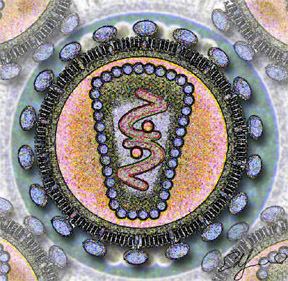 | ||
In parasitology and epidemiology, a host switch (or host shift) is an evolutionary change of host specificity. All symbiotic species, such as parasites, pathogens and mutualists exhibit a certain degree of host specificity. They occur in the body (or on the body surface) of a single host species or – more often – on a limited set of host species. In the latter case, the suitable host species tend to be taxonomically related, sharing similar morphology and physiology.
For example, the human immunodeficiency virus used to occur in non-human primates in West-central Africa, and have switched to humans in the early 20th century.
Recent studies proposed to discriminate between two different types of evolutionary changes in host specificity.
According to this view, host switch is a sudden and accidental colonization of a new host species by a few parasite individuals that are capable to establish a new and viable population there. After the switch, the new population is more-or-less isolated from the parasite population on the donor host species. It does not affect the further fate of the conspecific parasites on the donor host, and it may finally lead to parasite speciation. It is more likely to target an increasing host population that harbours a relatively poor parasite/pathogen fauna, such as the pioneer populations of invasive species.
Contrarily, host-shift is a gradual change of the relative role of a particular host species as primary versus secondary host, in case of a multi-host parasite species. The former primary host slowly becomes a secondary host or even becomes totally abandoned, while the former secondary host becomes a new primary host species. This process is slower and more predictable, and it does not increase parasite diversity. Predictably, it more often occurs in shrinking host populations that harbours a relatively (considering the small host population size) rich parasite/pathogen fauna.
